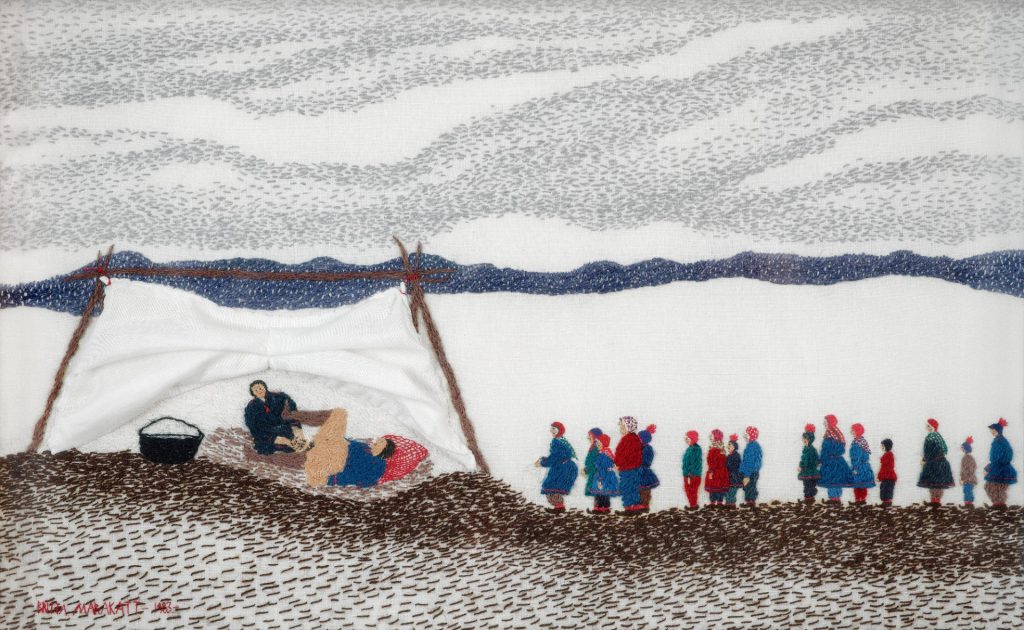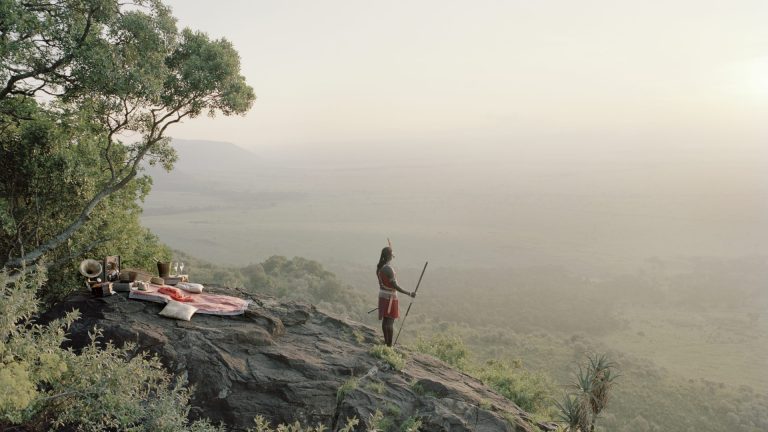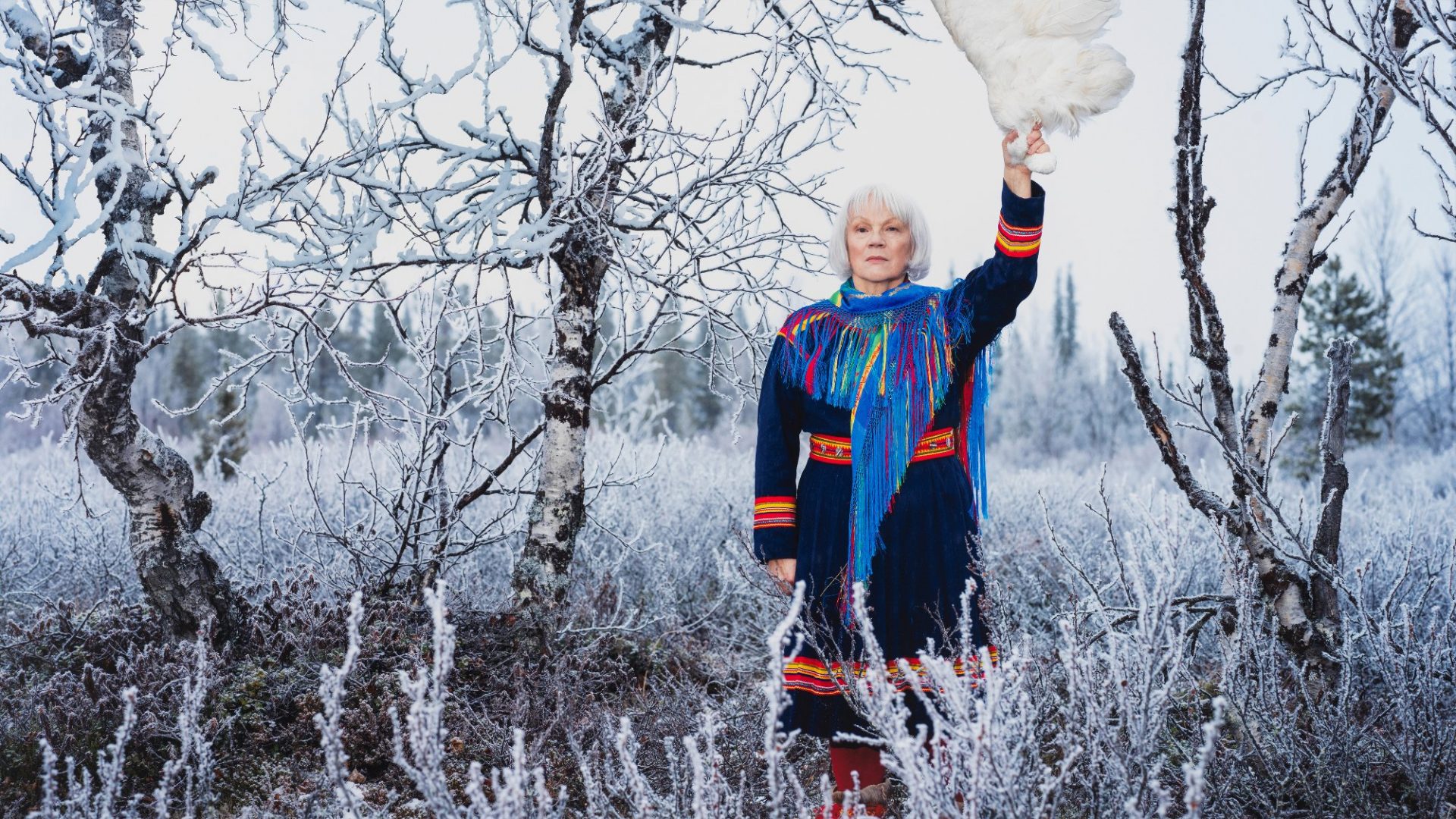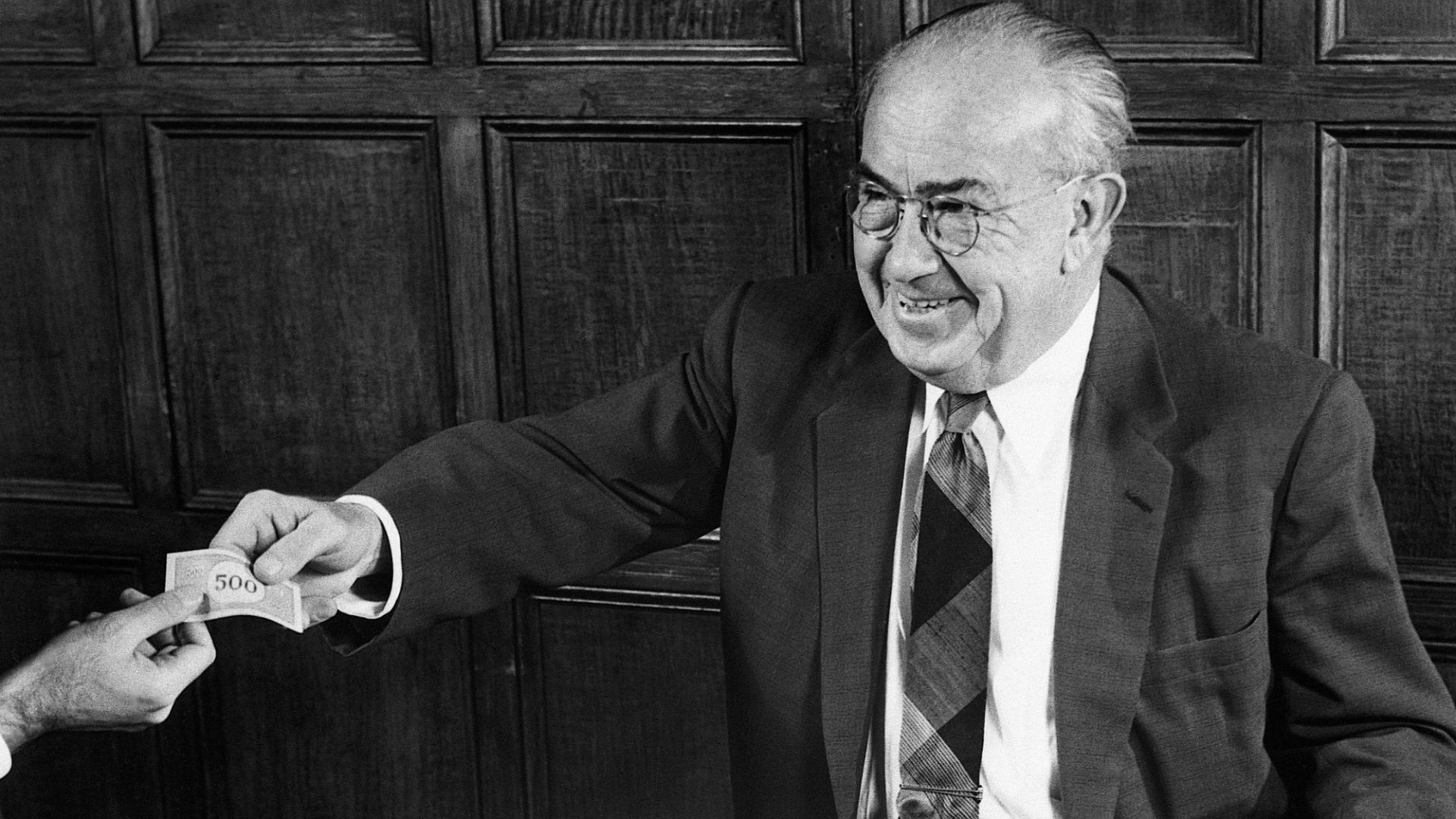Artist Britta Marakatt-Labba was born in a tent, “to the sound of rippling water and flying birds.” Her parents, Sámi herdsman from the north of Scandinavia, were guiding their reindeer on the annual migration from their summer pastures to the winter grazing areas.
The young Britta grew up immersed in the culture of the nomadic people and embraced duodji, handicrafts fashioned with care and love from wood, reindeer antlers, leather and wool until, after years spent experimenting with textiles, she turned to embroidery, itself a quintessential Sámi art form, to express the stories of her people.
She records her own arrival into the world in 1951 with the unflinchingly candid Giving Birth, but one work, Historja (History) is an extraordinary achievement, an epic portrayal of the Sámi world, 24 metres long and 39cm high. It fills one entire gallery in Stockholm’s Moderna Museet as the museum celebrates her rare talent with an exhibition titled Where Each Stitch Breathes. Hundreds of tiny figures, wolves, reindeer and goddesses, are rendered in a pageant of vibrant colour and with a needle-sharp eye for detail.
To walk its length is to share in the lives and history of the Sámi from ancient days, when the forests were alive with predatory wolves and lynx, terrorising cattle and herdsmen alike. Look closely and you’ll see tiny female faces peering out from behind the leaves – some wearing red horned hats – representing goddesses of hunting and fertility, as well as the goddess of the door, who guards the home and its inhabitants against evil spirits.
We follow the hunters and gatherers clutching bows and arrows, driving their herds across inhospitable snowy wastes, learning to tame the reindeer and use them for meat, hides and antlers. We see how they adapt the beasts to drag their sleds as they follow the seasons to fertile grazing grounds, setting up camps in their lavvus, or tents, made of animal hides or canvas.

Cattle graze, hay is dried, a farmer works in his barn up to his ankles in dung, his farm tools neatly hanging on the wall. Then they take to the sea to join the coastal Sámi in Norway, where farmers become fishermen for the season.
But then comes a scene completely out of kilter with the bucolic charm which has gone before, and one that has profound significance for the artist. It shows the burning down of a church during a rebellion against the oppressive Swedish-Norwegian government in 1852, in which the rebels killed the local landowner and destroyed the home of a merchant. Marakatt-Labba chose to make it a church as a more dramatic symbol of the repression the clergy imposed on the people – banning, for example, the horn hats worn by the goddesses in the opening scene.
For centuries, the Sámi were excluded from society. In Norway, the language was banned for everyday use and only those with Norwegian names were allowed to buy land. It was not until 1959 that the injunction against the use of the language in schools was lifted.
This was the legacy that informed Marakatt-Labba’s radical instincts. In 1978, she was one of the founders of the Máze Group, which fought for Sámi liberation and self-determination and is a vociferous opponent of the depredations of Sámi territory by pylons, wind turbines and industrialisation.
For a clearer understanding of the way she dramatises her causes with her art, we must leave the sled tracks of Historja and investigate two other works.
Suggested Reading


Zed Nelson’s unnatural world
In Garjját (The Crows), 1981, a depiction of a demonstration against a scheme to build a hydroelectric power station in northern Norway, a flock of crows descend on a hillside. As they land, they transmogrify into black uniformed police and brutally break up the protest, arresting the artist and her comrades. For Marakatt-Labba, the police are like carrion birds in the way they “pick everything clean.” Fittingly, the correct collective name for crows is a murder.
Rats are another symbol of the hated authorities. In Deattán (Nightmare) from 1986, swarms of the creatures invade a lávvu where people are sleeping, devouring bodies, gnawing at bones and splattering blood everywhere. Somehow, the ferocious imagery is made the more disquieting because it is rendered not with angry daubs of paint but in an art form more normally identified with flowers and pretty patterns than an onslaught of such feral intensity.
Back on the trail with Historja, it is almost a relief to journey on under never-ending skies where the people in their traditional reds and blues gaze up at their favourite constellation, the moose, that lugubrious symbol of the wild north, and follow the Pole star, which, according to myth, holds up the sky.
The epic ends with the goddess of hunting shooting the arrow of knowledge towards her sisters as they pray that the Sámi will continue to live in safety. Who can know what happens next?
As Marakatt-Labba says: “Everything is predestined; there is no point in stressing. What is to come will come.”
Where Each Stitch Breathes is at Stockholm’s Moderna Museet until November 9




